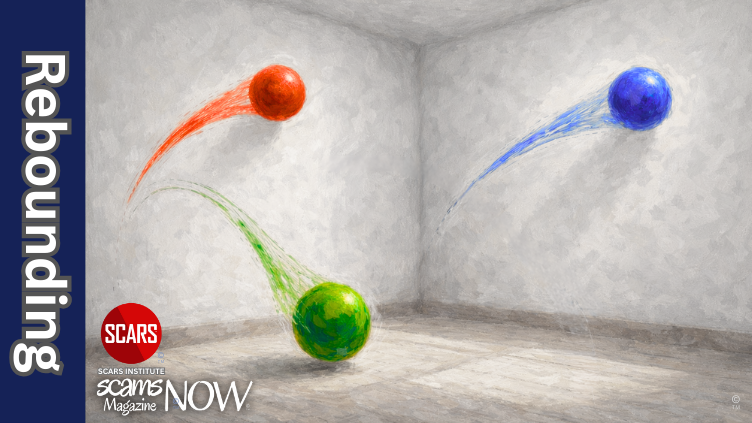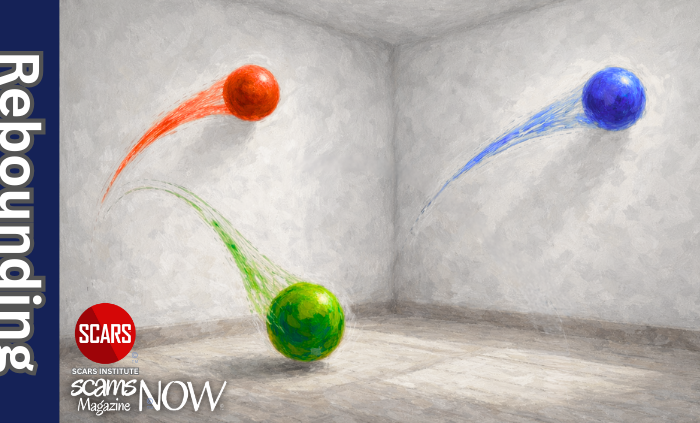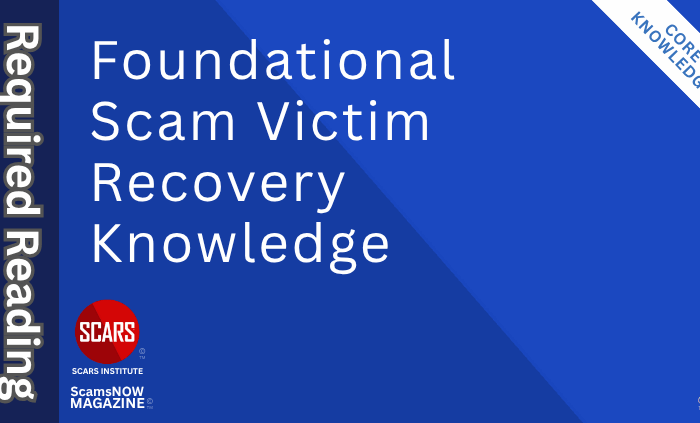
Motte and Bailey – A Cognitive Pattern that Inhibits Honest Acceptance
The Motte and Bailey Defense Mechanism: How Scam Victims Use Argument or Opinion Shifts to Protect Themselves
Primary Category: Scam Victim Recoervy Psychology // Scam Victim Recovery Philosophy
Authors:
• Vianey Gonzalez B.Sc(Psych) – Licensed Psychologist, Specialty in Crime Victim Trauma Therapy, Neuropsychologist, Certified Deception Professional, Psychology Advisory Panel & Director of the Society of Citizens Against Relationship Scams Inc.
• Tim McGuinness, Ph.D., DFin, MCPO, MAnth – Anthropologist, Scientist, Polymath, Director of the Society of Citizens Against Relationship Scams Inc.
About This Article
The motte and bailey is more than just an argument tactic, it is a psychological defense mechanism that allows you to protect your emotional safety while avoiding deeper vulnerability. After trauma, especially scams or betrayal, your mind often shifts between bold, emotionally charged statements that make you feel strong and safer fallback positions that are easier to defend. This pattern helps you avoid shame, fear, or the discomfort of uncertainty. However, if you keep using this strategy, you stay stuck in surface-level thinking. You do not build the resilience or critical awareness needed for long-term healing. Recognizing when you are switching between extremes allows you to stop creating mental traps for yourself. It teaches you to hold complex ideas without fear and to balance caution with emotional honesty. This shift is necessary for real recovery, whether you are dealing with trauma, protecting yourself from future scams, or trying to become a clearer thinker.
Note: This article is intended for informational purposes and does not replace professional medical advice. If you are experiencing distress, please consult a qualified mental health professional.

The Motte and Bailey Defense Mechanism: How Scam Victims Use Argument or Opinion Shifts to Protect Themselves
What Is the Motte and Bailey in Philosophy and Psychology?
The Motte and Bailey is not just a medieval castle design. It is also a concept used in philosophy, psychology, rhetoric, and argument analysis. It describes a specific pattern of thinking and communication where someone shifts between two different positions, one that is defensible but trivial (the Motte), and one that is bold, emotionally satisfying, or manipulative but hard to defend (the Bailey). The person switches between the two depending on whether they are being challenged. It is also a psychological defense mechanism.
The Origin of the Term
The term comes from a type of medieval fortification. The Motte was a small, secure tower on a hill that was easy to defend. The Bailey was a larger, more comfortable living area around the Motte that was harder to protect. When invaders attacked, people retreated to the Motte for safety. Once the danger passed, they returned to the Bailey because it was where they wanted to live.
Philosopher Nicholas Shackel first used this analogy in 2005 to describe a rhetorical strategy. People make grand claims (the Bailey) because these claims feel powerful, exciting, or socially useful. When those claims are questioned, they retreat to a safer, more defensible position (the Motte). Once the criticism goes away, they return to the original, more aggressive claim.
How It Works in Philosophy and Argumentation
The Motte and Bailey cognitive pattern or tactic appears frequently in philosophical discussions, political debates, and social commentary. It happens when someone alternates between an extreme, emotionally charged statement and a safer, more defensible one, depending on the level of scrutiny they face. The pattern often starts with a bold, sweeping claim that excites attention or rallies support. This is the Bailey. It is provocative and emotionally satisfying, but it is also difficult to defend when someone challenges it directly.
For example, a person might say, All societal systems are oppressive and must be dismantled. This is a classic Bailey statement. It carries emotional weight, creates a sense of urgency, and appeals to people who feel victimized or angry about injustice. However, it is also logically unstable. To dismantle all systems would mean removing government, healthcare, education, or legal protections, along with systems that genuinely cause harm. The Bailey position is difficult to justify in a real-world context because it ignores nuance, complexity, and unintended consequences.
When someone challenges this extreme statement, the person often retreats to the Motte. The Motte is a simpler, safer version of the claim that is easier to defend. In this case, the person might say, “Well, I just mean that some systems have flaws and should be improved.” This is a statement few reasonable people would disagree with. Most people accept that no system is perfect and that society should evolve and improve. The Motte feels like a safe hill to defend. It is stable, sensible, and unlikely to trigger backlash.
Once the challenge ends and the pressure fades, the person often returns to promoting the Bailey again. They go back to making sweeping claims or calls for radical action because the Bailey excites people. It builds energy, creates social momentum, and feels more powerful than the careful, measured language of the Motte. This back-and-forth process allows a person to reap the emotional benefits of the Bailey while hiding behind the safety of the Motte when questioned.
This pattern is not always deliberate. Sometimes people are not consciously trying to manipulate others. They may genuinely believe both versions of the argument at different times. The emotional part of the brain loves bold, black-and-white thinking because it feels easier. The rational part of the brain prefers balance and compromise, but it often gets overridden when emotions run high. The Motte and Bailey strategy emerges when these two systems collide.
In philosophical debates, this tactic causes confusion and frustration because it blocks honest discussion. It prevents people from having real conversations about solutions or compromises. It allows the person using the tactic to avoid accountability while still pushing extreme ideas. Over time, it damages trust in dialogue and turns discussions into games of verbal defense instead of productive exchanges. Recognizing the Motte and Bailey helps you keep arguments clear, honest, and grounded in reality.
The Psychological Side of Motte and Bailey
The Motte and Bailey is not just a debate tactic. It is also a psychological defense mechanism that protects emotional investments. When you believe something strongly, you are not just holding onto a piece of information. You are attaching your identity, your self-worth, and your worldview to that belief. This creates emotional weight. If someone challenges your belief, it feels like a personal attack, even if the disagreement is logical or factual. The mind responds by trying to protect itself. One of the ways it does this is by switching between bold claims and safer statements. This switch allows you to avoid feeling wrong while still holding onto the parts of your belief that feel empowering or emotionally rewarding.
This defense mechanism shows up in many areas of life. You might see it in trauma recovery, scam victim experiences, personal relationships, or social media debates. The psychological function is the same. The Bailey is the bold, emotionally satisfying claim that makes you feel powerful or morally superior. It might be something like “I will never trust anyone again because people are awful” or “I am completely over what happened to me and no one can hurt me now.” These statements feel strong. They give you a sense of control in a world that feels unsafe. However, when someone challenges these ideas, you may unconsciously shift to the Motte. You might say, “Well, I just mean that I am more careful now, or I am still healing, but I am better than before.” These are reasonable statements that almost no one would argue against.
This shift serves an important psychological function. It helps you avoid cognitive dissonance, the uncomfortable feeling that happens when your beliefs and your reality clash. If you hold onto the Bailey and someone shows you clear evidence that it is not true, you are forced to face a painful question: Was I wrong? That can feel like failure. It can trigger shame, embarrassment, or fear. Retreating to the Motte lets you escape that discomfort. You do not have to admit you were wrong. You just shift the conversation to something safer.
In scam victim recovery, this shows up often. After betrayal trauma, victims sometimes adopt sweeping beliefs to protect themselves emotionally. You might tell yourself, “Only a fool would fall for that kind of scam, and I am no fool, so I will never fall for anything like that again.” That is the Bailey. It feels powerful because it rebuilds your shattered confidence. However, when someone gently points out that intelligence and caution do not always prevent scams, you may retreat to the Motte and say, “I just mean that I have learned to be more cautious now.” This helps you maintain your emotional balance while avoiding the deeper work of facing vulnerability.
The Motte and Bailey is appealing because it lets you feel like you won the argument, even if you never defended the Bailey successfully. It gives you a psychological escape route. You keep the emotional high of the bold statement but fall back on the safe position when pressed. This pattern allows you to avoid full accountability, both with yourself and with others.
Understanding this pattern is important if you want to build emotional resilience and intellectual honesty. When you recognize the Motte and Bailey in your own thinking, you can pause and ask, “Am I shifting positions because I am protecting my ego?” That question helps you stay grounded. It keeps you focused on real growth, not just emotional comfort. Emotional healing does not come from winning arguments or avoiding discomfort. It comes from learning to hold your beliefs with both confidence and humility.
Why It Matters
The Motte and Bailey tactic is intellectually dishonest if used intentionally, but most people do it without realizing it. It is a defense mechanism that protects emotional comfort at the expense of clear thinking. Learning to recognize this pattern helps you develop better critical thinking skills. It teaches you to ask yourself:
- “Am I defending what I originally claimed, or have I shifted to a safer position?”
- “Am I making a bold statement because it feels good, but retreating when challenged?”
- “Am I being honest about my argument, or am I creating a psychological trap for myself and others?”
The Motte and Bailey pattern is more than just a rhetorical trick. It is a reflection of how human beings naturally protect their emotional comfort, sometimes at the cost of clear thinking. While the tactic is intellectually dishonest when used deliberately, most people do not do it on purpose. They slide into it unconsciously. Your mind prefers emotional security over uncomfortable truth, especially when your identity, beliefs, or personal narrative feel threatened. That is why the Motte and Bailey defense is so common, not just in debates but in everyday thinking.
Recognizing this pattern is important because it teaches you how to spot emotional reasoning hiding behind intellectual claims. If you are trying to grow as a person, recover from trauma, or engage in honest discussion, you need to understand when you are shifting your position to protect your feelings rather than defending your ideas. This happens to everyone. It is not a sign of weakness, but it is something you need to monitor if you want to live in reality.
You can train yourself to notice this by asking specific questions. Start with, “Am I defending what I originally claimed, or have I shifted to a safer position?” When someone challenges your point of view, check whether you are still arguing for the same bold idea you started with, or whether you have quietly moved to a softer, easier claim. If you are switching positions to avoid discomfort, you are probably using a Motte and Bailey defense without realizing it.
Next, ask, “Am I making this bold statement because it feels good, but retreating when challenged?” Many people enjoy the emotional high of strong claims. It feels empowering to say things like, “I am totally over my trauma, or I will never fall for that again.” However, when someone points out the flaws in those statements, it is tempting to back away and say, “Well, I just meant I am working on myself.” This retreat protects your pride, but it prevents growth.
You should also ask, “Am I being honest about my argument, or am I creating a psychological trap for myself and others?” When you switch between the Motte and the Bailey, you confuse not only the person you are talking to but also yourself. You trick your mind into thinking you are right, even when you have not actually defended your original position. This creates mental traps that make recovery, learning, and honest conversation harder.
The Motte and Bailey is a useful framework because it explains why debates often feel circular and frustrating. It shows you how arguments turn into dead ends, not because the ideas are too complex, but because people unconsciously protect fragile beliefs with mental sleight of hand. Learning to see this in yourself is part of developing critical thinking. It helps you stay grounded, face hard truths, and communicate more honestly, whether you are talking about philosophy, trauma recovery, or personal growth.
For Scam Victims
For scam victims, the Motte and Bailey concept often plays out as a psychological self-defense mechanism during recovery. It affects how you think about yourself, your experience, and your safety in the world. Your mind tries to balance emotional relief with logical defensibility, leading to shifts between bold internal claims (the Bailey) and safer fallback positions (the Motte). This pattern is usually not intentional. It happens automatically as a way to avoid shame, fear, or helplessness.
The Bailey: Emotional Defense Statements
After a scam, you may find yourself making grand, emotionally charged statements about your recovery or your identity. These are the Bailey claims. They feel good to say because they restore a sense of control, superiority, or closure. Examples include:
-
- “That will never happen to me again.”
- “I learned my lesson, so I am now immune to scams.”
- “Only stupid or gullible people fall for this stuff, and I am not one of them anymore.”
- “All scammers are monsters, and I will spot them instantly next time.”
These statements are bold and comforting. They make you feel safe in the moment. However, they are also extreme, often inaccurate, and psychologically risky. They simplify a complex reality into an emotional certainty that may not hold up under scrutiny.
The Motte: Defensive Retreat Statements
When you are challenged, either by a therapist, a support group, or your own thoughts, you often retreat to a safer, more defensible position. These are the Motte claims. They are more reasonable, easier to defend, and less emotionally charged. Examples include:
-
- “I just mean I am being more careful now.”
- “I am aware of scams and do not want to think about them every day.”
- “I trust my judgment more than I used to, but I know I need to stay cautious.”
- “Not all scammers are easy to spot, but I will try my best.”
These statements are valid, but if you only say them when pressed and then return to the Bailey when you feel safe again, you are trapped in the Motte and Bailey cycle. Your mind flips back and forth between emotional protection and rational defensibility, keeping you from fully integrating the truth.
Why Scam Victims Use This Pattern
The Motte and Bailey is a natural response to trauma. After betrayal, your brain wants to feel powerful again. The Bailey helps you feel strong, safe, and in control. However, when someone asks difficult questions, your mind cannot defend the Bailey directly. So you retreat to the Motte to avoid conflict or collapse.
This pattern protects you from feeling vulnerable, but it also prevents real growth. If you keep switching between extreme statements and safe fallbacks, you avoid examining the gray areas of your experience. You may stop learning about how scams work, how your own biases made you vulnerable, or how scammers use psychology to manipulate even the smartest people. You might stay locked in false security rather than building real resilience.
Motte and Bailey Compared to Bragging and Grandiosity
The Motte and Bailey pattern is often confused with bragging or grandiosity, but they are not exactly the same. Bragging is when you talk about your achievements, qualities, or strengths in an exaggerated way to impress others. Grandiosity happens when you genuinely believe you are superior to others, either intellectually, morally, or emotionally. Both behaviors serve emotional needs like boosting self-esteem or masking insecurity. The Motte and Bailey is different because it involves a strategic shift between bold claims and safe defenses, even if the person does not realize they are doing it.
In bragging, you present yourself as extraordinary and hope people believe it. For example, you might say, “I am the best at spotting scams now,” or “I would never fall for that again because I am too smart.” This is about self-image. You want others to admire you or validate your recovery. Grandiosity takes that even further. You might not just say these things to others; you might believe them deeply, even when there is no evidence to support them. Grandiosity often masks underlying shame or fear by building an inflated self-concept.
The Motte and Bailey works differently. It involves switching between emotional boldness and rational safety depending on how secure you feel. You might start with a grandiose claim, like “I will never be fooled again,” but when someone questions it, you back off and say, “Well, I just meant I am more careful now.” Once the conversation shifts away from the challenge, you often return to the original bold claim. This creates a mental loop that protects you from emotional discomfort while keeping the illusion of strength intact.
Bragging and grandiosity are more about attention and validation. The Motte and Bailey is about emotional survival. It protects you from having to face uncertainty, vulnerability, or the idea that you are still at risk. Scam victims often combine all three. You might brag to feel better, slip into grandiosity to block out fear, and use the Motte and Bailey pattern when someone pushes back.
Learning to see the difference helps you avoid self-deception. You can still take pride in your recovery without exaggerating it. You can still feel stronger without pretending you are invincible. When you catch yourself switching between emotional highs and safe retreats, you can pause, reflect, and choose honesty instead. This is how you build real confidence without the need for illusions.
Motte and Bailey as a Psychological Defense Mechanism
The Motte and Bailey is not just a tactic used in arguments. It is also a psychological defense mechanism that helps you cope with emotional stress, fear, or trauma. When your mind feels threatened, whether by outside criticism or internal doubt, it often looks for a quick way to reduce that discomfort. The Motte and Bailey pattern provides this relief by letting you shift between bold emotional statements and safer, more rational fallback positions. This allows you to protect your sense of identity without fully facing painful realities.
After trauma, especially betrayal trauma like a scam, you often feel fragile. Your confidence has been shaken. Your mind tries to rebuild a sense of control by creating new beliefs about yourself, your safety, and your world. Sometimes these beliefs are extreme because they feel stronger. You might think, “I will never be scammed again,” or “No one can hurt me now because I am too smart for that.” These statements give you an emotional boost. They create the illusion of invincibility. That is the Bailey.
However, part of you knows that life is not that simple. Deep down, you understand that risk still exists. You cannot control everything. When someone challenges your bold claims or when your own doubts surface, you retreat to the Motte. This is the safer version of the story. You might say, “I am just more cautious now,” or “I still have healing to do, but I am better than before.” The Motte feels less threatening because it is harder to argue against. It lets you avoid feeling exposed while keeping your emotional defenses intact.
This back-and-forth switch between the Motte and the Bailey creates a psychological safety net. It helps you manage the fear of vulnerability while still feeling strong. The problem is that it prevents real growth. If you never stay in one place long enough to face the truth, you avoid doing the deeper work of recovery. You stay stuck in a loop of emotional highs and safe retreats.
Understanding this defense pattern helps you break the cycle. You can still protect yourself emotionally, but you can do it with honesty. Instead of swinging between extremes, you learn to hold complex thoughts without fear. This is how you move from coping to real healing.
How to Break the Pattern
You can stop this cycle by learning to hold complexity without fear. You can say to yourself:
- “I learned important lessons, but I am still human and capable of mistakes.”
- “I feel safer now, but I need to keep practicing awareness.”
- “Scammers are predators, but they are also skilled manipulators who evolve their tactics.”
- “Healing requires both emotional closure and ongoing vigilance.”
By refusing to shift between extremes, you develop healthier thinking. You stay grounded in both truth and caution. This helps you avoid future scams, build better emotional habits, and recover in a balanced, realistic way.
For scam victims, the Motte and Bailey show up in the way you manage fear, shame, and self-image. It allows you to avoid emotional discomfort by claiming certainty when you feel safe, but retreating to softer statements when challenged. This feels protective, but it creates mental traps that prevent deep healing. Recognizing the pattern helps you move beyond emotional defense and into true post-trauma growth.
Conclusion
The Motte and Bailey is not just a debate strategy used by philosophers or politicians. It is a psychological pattern that shows up in everyday thinking, especially after trauma. For scam victims, it becomes a way to protect your sense of safety and identity. You make bold statements to feel strong again, and when someone challenges you, you retreat to safer, softer claims. This pattern gives you temporary relief, but it prevents lasting recovery. You cannot build real safety by swinging between emotional extremes and logical retreats. True healing requires you to hold the middle ground with steady awareness. You need to recognize that life is not black and white. You will make mistakes again. The world will always contain risk. Scammers will continue to evolve, and emotional vulnerability is part of being human. When you stop using the Motte and Bailey to protect fragile beliefs, you give yourself the chance to build resilience based on truth, not comfort. This mindset helps you live in reality, stay cautious without becoming fearful, and move forward with both confidence and humility.
-/ 30 /-
What do you think about this?
Please share your thoughts in a comment below!
One Comment
Leave A Comment
Important Information for New Scam Victims
- Please visit www.ScamVictimsSupport.org – a SCARS Website for New Scam Victims & Sextortion Victims.
- SCARS Institute now offers its free, safe, and private Scam Survivor’s Support Community at www.SCARScommunity.org – this is not on a social media platform, it is our own safe & secure platform created by the SCARS Institute especially for scam victims & survivors.
- SCARS Institute now offers a free recovery learning program at www.SCARSeducation.org.
- Please visit www.ScamPsychology.org – to more fully understand the psychological concepts involved in scams and scam victim recovery.
If you are looking for local trauma counselors, please visit counseling.AgainstScams.org
If you need to speak with someone now, you can dial 988 or find phone numbers for crisis hotlines all around the world here: www.opencounseling.com/suicide-hotlines
Statement About Victim Blaming
Some of our articles discuss various aspects of victims. This is both about better understanding victims (the science of victimology) and their behaviors and psychology. This helps us to educate victims/survivors about why these crimes happened and not to blame themselves, better develop recovery programs, and help victims avoid scams in the future. At times, this may sound like blaming the victim, but it does not blame scam victims; we are simply explaining the hows and whys of the experience victims have.
These articles, about the Psychology of Scams or Victim Psychology – meaning that all humans have psychological or cognitive characteristics in common that can either be exploited or work against us – help us all to understand the unique challenges victims face before, during, and after scams, fraud, or cybercrimes. These sometimes talk about some of the vulnerabilities the scammers exploit. Victims rarely have control of them or are even aware of them, until something like a scam happens, and then they can learn how their mind works and how to overcome these mechanisms.
Articles like these help victims and others understand these processes and how to help prevent them from being exploited again or to help them recover more easily by understanding their post-scam behaviors. Learn more about the Psychology of Scams at www.ScamPsychology.org
SCARS INSTITUTE RESOURCES:
If You Have Been Victimized By A Scam Or Cybercrime
♦ If you are a victim of scams, go to www.ScamVictimsSupport.org for real knowledge and help
♦ SCARS Institute now offers its free, safe, and private Scam Survivor’s Support Community at www.SCARScommunity.org/register – this is not on a social media platform, it is our own safe & secure platform created by the SCARS Institute especially for scam victims & survivors.
♦ Enroll in SCARS Scam Survivor’s School now at www.SCARSeducation.org
♦ To report criminals, visit https://reporting.AgainstScams.org – we will NEVER give your data to money recovery companies like some do!
♦ Follow us and find our podcasts, webinars, and helpful videos on YouTube: https://www.youtube.com/@RomancescamsNowcom
♦ Learn about the Psychology of Scams at www.ScamPsychology.org
♦ Dig deeper into the reality of scams, fraud, and cybercrime at www.ScamsNOW.com and www.RomanceScamsNOW.com
♦ Scam Survivor’s Stories: www.ScamSurvivorStories.org
♦ For Scam Victim Advocates visit www.ScamVictimsAdvocates.org
♦ See more scammer photos on www.ScammerPhotos.com
You can also find the SCARS Institute’s knowledge and information on Facebook, Instagram, X, LinkedIn, and TruthSocial
Psychology Disclaimer:
All articles about psychology and the human brain on this website are for information & education only
The information provided in this and other SCARS articles are intended for educational and self-help purposes only and should not be construed as a substitute for professional therapy or counseling.
Note about Mindfulness: Mindfulness practices have the potential to create psychological distress for some individuals. Please consult a mental health professional or experienced meditation instructor for guidance should you encounter difficulties.
While any self-help techniques outlined herein may be beneficial for scam victims seeking to recover from their experience and move towards recovery, it is important to consult with a qualified mental health professional before initiating any course of action. Each individual’s experience and needs are unique, and what works for one person may not be suitable for another.
Additionally, any approach may not be appropriate for individuals with certain pre-existing mental health conditions or trauma histories. It is advisable to seek guidance from a licensed therapist or counselor who can provide personalized support, guidance, and treatment tailored to your specific needs.
If you are experiencing significant distress or emotional difficulties related to a scam or other traumatic event, please consult your doctor or mental health provider for appropriate care and support.
Also read our SCARS Institute Statement about Professional Care for Scam Victims – click here
If you are in crisis, feeling desperate, or in despair, please call 988 or your local crisis hotline – international numbers here.
More ScamsNOW.com Articles
A Question of Trust
At the SCARS Institute, we invite you to do your own research on the topics we speak about and publish. Our team investigates the subject being discussed, especially when it comes to understanding the scam victims-survivors’ experience. You can do Google searches, but in many cases, you will have to wade through scientific papers and studies. However, remember that biases and perspectives matter and influence the outcome. Regardless, we encourage you to explore these topics as thoroughly as you can for your own awareness.















![NavyLogo@4x-81[1] Motte and Bailey - A Cognitive Pattern & Defense Mechanism that Inhibits Honest Acceptance - 2025](https://scamsnow.com/wp-content/uploads/2025/04/NavyLogo@4x-811.png)









![scars-institute[1] Motte and Bailey - A Cognitive Pattern & Defense Mechanism that Inhibits Honest Acceptance - 2025](https://scamsnow.com/wp-content/uploads/2025/04/scars-institute1.png)

![niprc1.png1_-150×1501-1[1] Motte and Bailey - A Cognitive Pattern & Defense Mechanism that Inhibits Honest Acceptance - 2025](https://scamsnow.com/wp-content/uploads/2025/04/niprc1.png1_-150x1501-11.webp)

Important information for reflection for any survivor :
-to what extent the Motte & Bailey method is present / still present / in my thinking.